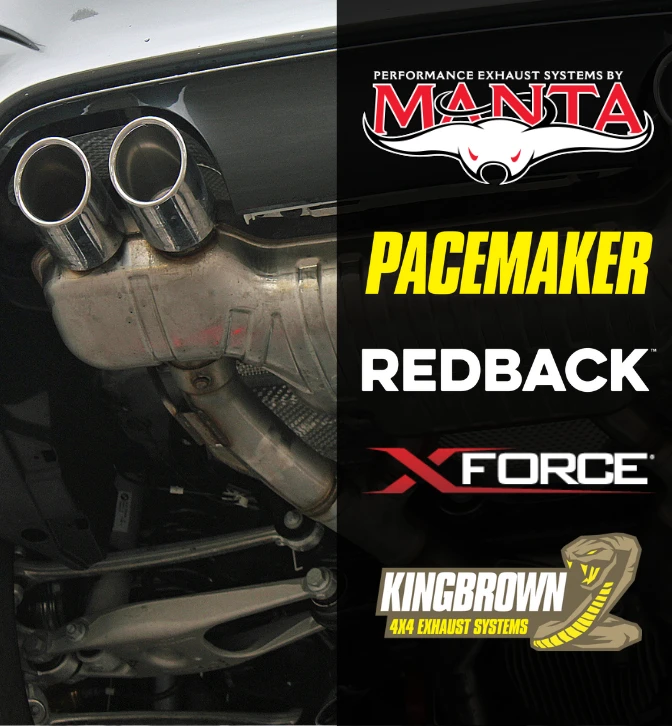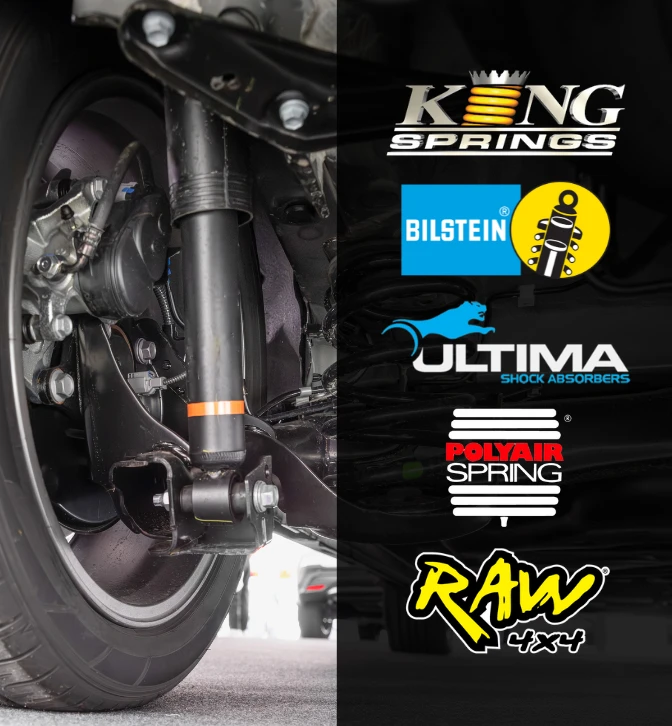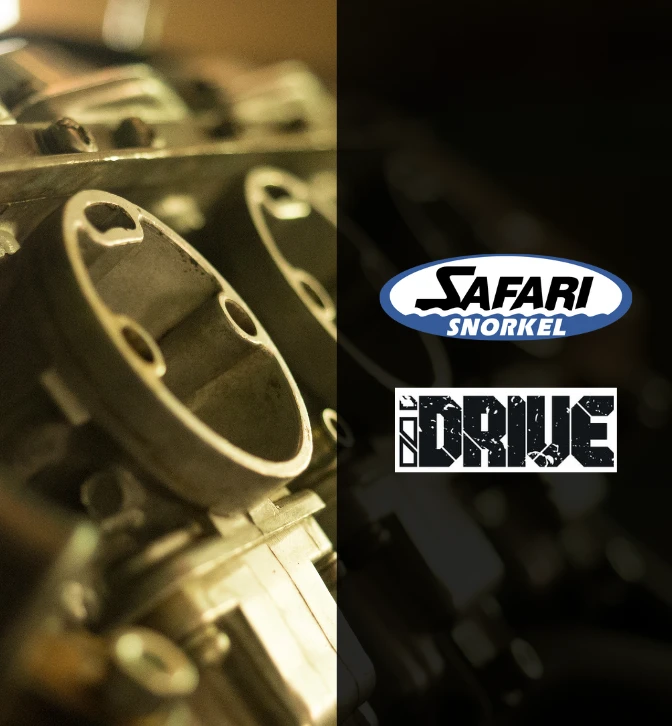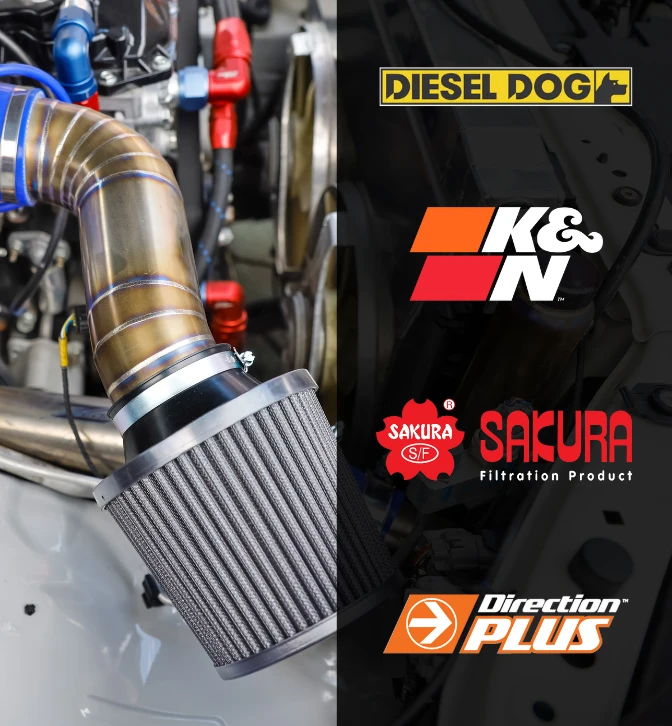-
Exhaust
- Back
- Exhaust
- Performance Exhaust Systems
- Standard Replacement Exhaust Systems
-
Exhaust Accessories
- Exhaust Bolts, Nuts & Studs
- Clamps
- Collectors
- Exhaust Reducers & Couplers
- Exhaust Tips
- Flange Plates
- Exhaust Flex Bellows
- Exhaust Brackets & Hanger Rods
- Gaskets
- Heat Tape
- Mandrel Bends
- O2 Sensors & Exhaust Temperature Sensor Accessories
- Paint
- Muffler & Exhaust Mounting Brackets
- Tube
- X & Y Pipes
- All Exhaust Accessories Products
- Catalytic Converters
- DPF Filters
- Exhaust Extractors / Headers
- Universal Mufflers & Hotdog Mufflers
- All Exhaust Products
![Exhaust]()
- Suspension
- Performance
- Towing
- Filters
- Truck
- On Sale
- About Us
- Blog
- Contact Us
Suspension Struts and Shocks: Enhancing Ride Comfort and Control
Date Posted: 30 November 2023

Few parts of an automobile are as important to performance and ride quality as suspension struts and shocks. The maintenance of ride comfort and control while driving is greatly dependent on these hidden heroes of vehicle dynamics.
Your driving experience can be greatly impacted by the state and quality of your suspension system, whether you're driving on city streets or going on an off-road excursion. We examine the significance of suspension struts and shocks in this blog, emphasising how they improve ride comfort and vehicle control.
Our goal is to provide you with a thorough understanding of these parts, illuminating their purposes and the ways in which they enhance the overall performance of your car. This site aims to be your reliable resource for information when it comes to maintaining your car, whether you're an enthusiast or a daily driver trying to get a smoother, more controllable ride.
Understanding Vehicle Suspension
As the suspension system's pivot for controlling both vertical and lateral movements, struts and shocks are essential components. It is the job of shock absorbers, or just shocks, to control how quickly springs compress and rebound.
They ensure that the wheels of the car stay securely in contact with the road by doing this, which significantly reduces unwelcome bouncing. Conversely, struts provide a combined solution by combining the shock absorber with necessary structural elements into a unified, well-functioning unit.
This integration guarantees that both struts and shocks are essential to maintaining constant tyre-to-road contact while also streamlining the suspension's design. Together, they effectively prevent unnatural body movement and improve the car's overall stability.
Overview of Suspension System Components
- A car's suspension system is an intricate collection of parts meant to provide a controlled and comfortable ride.
- Sway bars, control arms, struts, shock absorbers (also known as dampers), and springs are important parts.
- Springs support the weight of the car and cushion it from impact on the road. They are usually coil or leaf springs.
- Control arms enable movement while preserving stability by joining the suspension to the car's frame.
- Stabiliser bars, often known as sway bars, improve stability by minimising body roll when cornering.
How They Impact Ride Comfort and Handling
- Ride Comfort: By reducing vibrations and impacts from uneven road conditions, shocks and struts are essential for a comfortable ride. Rider and driver discomfort is decreased as a result.
- Handling: A vehicle's handling qualities are significantly influenced by these parts. When struts and shocks are in good working order, they can reduce excessive body roll and improve steering response by preserving tyre grip while cornering.
- A car with worn-out shocks may exhibit considerable body wobble when approaching a sharp bend, making handling difficult. On the other hand, a car with properly maintained shocks would handle better and have less body movement.
- Vehicle Stability: Shocks and struts play a crucial role in a vehicle's overall stability. By assisting in the equal distribution of weight among all tyres, they help avoid excessive weight transfer when braking, cornering, and accelerating.
- When applying emergency brakes, a car with worn shocks may nose-dive, which will lessen the brakes' efficacy. A car with the right shocks will keep its stance level, which will improve stopping power.
A vehicle's suspension system depends on a number of parts to provide a smooth and manageable ride. As essential components of this system, shocks and struts control lateral and vertical movements that affect handling and ride comfort. By keeping these parts in good working order, drivers can control their cars more easily and have a smoother ride, which improves road safety and driving enjoyment in general.
Suspension Struts
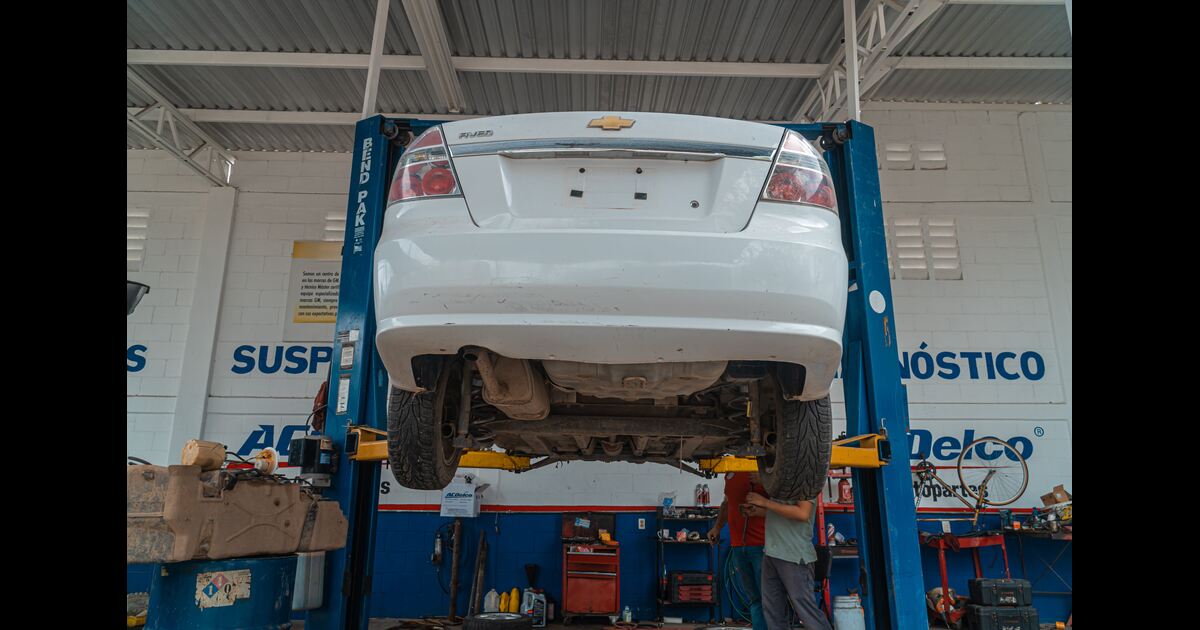
Suspension struts, sometimes called shock absorber struts or just struts, are essential parts of the suspension system of a car. These parts do two things: they provide necessary structural support and efficiently absorb shocks from uneven roads, which improves the ride quality as a whole.
The passengers in the car will have a more calm and controlled driving experience thanks to this mix of features. Moreover, struts are designed to effectively control both lateral and vertical movements, which significantly improves a car's overall handling and stability.
Types of Struts
- MacPherson Struts: One of the most popular kinds of suspension struts seen in contemporary cars are MacPherson struts. They simplify the suspension design and conserve space by combining a coil spring and a shock absorber into a single unit.
- Chapman Struts: Less popular than MacPherson struts, Chapman Struts are frequently used in racing and sports vehicles. They have a strut assembly that distributes weight evenly and offers precision handling, together with a single lower control arm.
- Inboard Struts: Integrated into the chassis instead of being directly attached to the wheels, inboard struts are seen in certain luxury and high-performance vehicles. Better weight distribution and enhanced handling qualities are made possible by this design.
Advantages of Integrated Strut Assemblies
- Simplified Design: Integrated strut assemblies, such as MacPherson struts, streamline the suspension system's design by combining multiple components into a single unit. This simplification reduces manufacturing complexity and cost.
- Space Efficiency: Integrated struts occupy less space within the wheel well compared to traditional shock absorbers and separate coil springs. This provides more room for other vehicle components and allows for creative design solutions.
- Improved Handling: The integration of struts can enhance a vehicle's handling characteristics by reducing unsprung weight, which is the weight of components not supported by the suspension. This can lead to better road grip and agility.
- Enhanced Ride Comfort: Struts are effective at dampening vibrations and shocks from the road, contributing to a smoother and more comfortable ride for passengers.
- Durability and Longevity: Integrated strut assemblies are generally durable and require less maintenance compared to separate components. This can lead to longer service life and lower maintenance costs for vehicle owners.
In order to provide structural support and control shocks caused by the road, suspension struts are crucial parts of a car's suspension system. With their unique benefits, different strut types—like MacPherson and Chapman struts - fit different vehicle uses. Popular in contemporary automotive engineering, integrated strut assemblies - such as the MacPherson strut - offer advantages like reduced design, space savings, better handling, increased ride comfort, and long-term durability.
Shock Absorbers
Often referred to as "shocks," shock absorbers are an essential component of the complex suspension system of a car. Their main goal is to carefully control and lessen the vibrations and oscillations caused by the suspension, greatly improving the driving experience as a whole. Through their skilful absorption of these movements, shock absorbers are indispensable in the pursuit of a ride that is both controlled and smooth.
Apart from their function in enhancing ride comfort, shock absorbers are essential parts of maintaining stable tyre-to-road contact, a critical element in enhancing vehicle stability, and eventually leading to a higher level of driving enjoyment and confidence.
How Shock Absorbers Dampen Suspension Movements
While most shock absorbers have a hydraulic system at their heart, most of them work on the basis of fluid dynamics. When a wheel travels over uneven ground or over bumps on the road, the piston of the shock absorber moves dynamically inside a cylinder that is carefully filled with hydraulic fluid.
One important component that is generated by this hydraulic activity is the damping force. This force is created directly from the piston's movement via the hydraulic fluid, and it is carefully adjusted to counteract and lessen the motion of the suspension to avoid undue bouncing. Furthermore, by offering both rebound and compression damping, shock absorbers play a dual role in suspension control.
While compression damping controls the suspension's compression when navigating obstacles, rebound damping controls the suspension's extension after compression. Together, these hydraulic principles determine how a car's suspension system is adjusted, resulting in a controlled and balanced ride.
Twin-Tube vs. Monotube Shocks
When it comes to shock absorbers, there are two main types: twin-tube shocks and monotube shocks. These two types differ in terms of their performance and design.
The more common type of shocks are called twin-tube shocks, and they have two cylinders: an outer reserve cylinder and an inner working cylinder. A mixture of gas and hydraulic fluid resides in the void left by this. These shocks are well-known for being reasonably priced and adaptable, and they perform admirably at providing a comfortable ride on a variety of automobiles.
Monotube Shocks, on the other hand, use a single cylinder that holds the hydraulic fluid and the piston. Due to their well-known ability to remove heat, they are frequently used in off-road and high-performance situations. Their main advantages are their exceptional heat management and precise damping control, which enable them to operate consistently even in extreme circumstances.
In order to manage and mitigate the movements caused by the suspension, shock absorbers are an essential part of a car's suspension system. They do this by preventing suspension compression and rebound using hydraulic dampening.
Twin-tube and monotube shock absorbers are the two main varieties of shock absorbers. Twin-tube shocks are more widely used and reasonably priced, offering a comfortable ride for a range of automobiles.
However, monotube shocks are better at dissipating heat and providing accurate damping control, which makes them perfect for off-road and high-performance applications. Maintaining the ride comfort, stability, and general performance of a vehicle requires an understanding of the function and types of shock absorbers.
Signs of Worn Struts and Shocks
Drivers and car lovers must know the symptoms of suspension wear. Struts, shocks, and springs affect ride comfort, handling, and vehicle performance. This section identifies suspension wear signs to help drivers improve road safety and enjoyment:
- Uneven Tyre Wear: This is a glaring indicator of worn shocks and struts. Certain areas of the tyre may wear out more quickly than others due to uneven tyre contact with the road caused by damaged suspension parts.
- Too Much Bouncing: If your car bounces around too much or has a "bouncy" ride, your struts or shocks may be affected. This can be especially apparent when travelling over uneven or difficult terrain.
- Nose-Diving During Braking: When applying brakes, if the front end of your car nose-dives forward, it may indicate damaged front shocks or struts. Braking effectiveness and control may be impacted by this occurrence.
- Body Roll When Cornering: Excessive body roll when cornering may indicate worn suspension parts. It may impair handling and give the car a less steady feeling.
- Excessive Vibration: At higher speeds, vibrations or trembling through the steering wheel or car body may be a sign of strut and shock issues.
Impact on Vehicle Performance and Safety
- Reduced Stability: Worn struts and shocks compromise a vehicle's stability and handling, making it more challenging to maintain control in emergency manoeuvres or adverse road conditions.
- Longer Stopping Distances: Inadequate shock absorption can result in longer braking distances, reducing the vehicle's ability to come to a stop quickly when needed.
- Increased Wear on Other Components: When suspension components deteriorate, the stress on other parts of the vehicle, such as tyres, brakes, and steering components, can increase, potentially leading to more extensive and costly repairs.
- Decreased Comfort: A vehicle with worn struts and shocks provides a less comfortable ride due to increased vibrations and jolts experienced by occupants.
- Impaired Road Safety: The combination of poor handling, longer stopping distances, and reduced stability poses a significant risk to road safety, both for the driver and other road users.
Regular Inspection and Maintenance
For your car to remain safe and operate at its best, suspension system maintenance must be done in a thorough manner. This means that the system's condition must be checked on a scheduled basis, ideally during routine servicing or at the prescribed intervals. Simultaneously, visual inspection is essential; both mechanics and car owners should carefully check the struts and shocks for leaks, corrosion, or excessive wear.
Promptly addressing concerns that are readily apparent is crucial. In addition, road testing used to evaluate handling and ride quality can also be used to identify potential suspension issues, especially if strange noises, excessive bouncing, or instability are present.
Lastly, it is highly recommended that you seek the assistance of a trained mechanic for a comprehensive and professional inspection of the suspension system. These experts can carefully examine and identify any problems, offering competent advice on any repairs or replacements required to maintain the suspension's best performance.
Maintaining the performance and safety of a vehicle requires an understanding of the signs of worn shocks and struts. These parts are essential for ride comfort, handling stability, and effective braking. In order to detect and treat suspension wear, your car must undergo routine inspections and maintenance. This will keep your car safe and fun to drive, save on expensive repairs, and preserve road safety.
Upgrading to Performance Struts and Shocks

Selective drivers can benefit from upgrading to high-performance struts and shocks in a number of ways. First off, these improvements can greatly improve handling accuracy and ride comfort. Performance-oriented parts are made to provide you with more exact control over your car's suspension, which improves your cornering stability and lessens body roll as you make sharp turns.
Furthermore, these improved parts provide improved sensitivity to irregularities in the road, guaranteeing a more comfortable and seamless driving experience. Second, one's driving tastes and style should guide the decision to upgrade.
Sportier and stiffer suspension configurations are preferred by those who drive fast or want more performance, while long-distance comfort-seekers could go for a setup that strikes a balance between handling ability and ride quality. Performance struts and shocks are therefore an investment that should be wisely chosen, taking into account the driver's anticipated usage and preferred driving characteristics.
Air Suspension vs. Conventional Suspension
By using air springs instead of more typical coil or leaf springs, air suspension technology offers a novel alternative to classic suspension systems. Among the many benefits of this cutting-edge technology is its dynamic ride height adjustment feature, which enhances ride comfort and handling flexibility.
Furthermore, load-levelling capabilities are another benefit that air suspension systems can offer. These are especially useful when hauling or lifting large workloads. It is imperative to acknowledge that air suspension systems typically entail greater complexity and maintenance costs in comparison to their traditional counterparts. Weighing personal demands and priorities is essential when deciding between air suspension and conventional suspension.
For many drivers, traditional suspension systems continue to be a dependable and affordable option, even though air suspension offers greater flexibility and versatility. In the end, the choice should be in line with the particular requirements of one's driving style and intended use.
Choosing the Right Struts and Shocks
Choosing the right struts and shocks for your car is a crucial decision that depends on a number of important factors. Compatibility with the brand and model of your car is crucial, to start with. For best performance and safety, it is imperative that the selected components meet the manufacturer's specifications.
Second, it's critical to recognise the best models and brands for particular uses. Appropriate shock absorbers and struts are necessary for a variety of driving applications, including off-road exploration, high-performance racing, and regular commuting. Thoroughly examined names and models that are well-known for their build and functionality can provide worthwhile choices.
Last but not least, it is wise to get professional advice from licenced mechanics or automotive professionals. These experts have the necessary training to evaluate the particular needs of your car and suggest struts and shocks that meet those needs, balancing performance and safety to perfection.
DIY Installation vs. Professional Service
Selecting between professional service and DIY installation for car parts like shocks and struts requires careful consideration of a number of aspects. The benefits of a hands-on approach and possible cost savings are two advantages of DIY installation.
It does, however, carry a risk of mistakes, such as inaccurate torque specifications and inadequate component alignment. Professional installation, on the other hand, guarantees accuracy and conformity to manufacturer requirements, lowering the possibility of problems during the installation process.
For vehicles with sophisticated safety features, vehicles with complicated suspension systems, or when there is any doubt about the installation procedure, it is best to use expert assistance. Furthermore, it is imperative to observe appropriate torque specifications during installation to guarantee safety and maximum efficiency.
This highlights the significance of having the necessary technical knowledge or hiring qualified professionals to complete the job in order to preserve the integrity of the vehicle's suspension system.
Suspension Tuning and Alignment
In order to maintain and improve the performance of a vehicle, proper alignment and suspension adjustments are essential. Proper alignment guarantees that the wheels of a car are positioned properly to maximise tyre contact with the road, which prolongs tyre life and enhances handling and fuel economy.
Suspension tuning is also essential for striking a balance between comfort and performance. A vehicle's handling and ride quality can be improved by fine-tuning the suspension system to suit individual driving styles and road conditions. For example, corner balancing greatly improves handling by distributing weight uniformly across all four tyres, reducing the possibility of uneven tyre wear, and enhancing stability when cornering at high speeds.
To sum up, careful attention to alignment and suspension tuning is essential for maximising the longevity of important car parts as well as customising the driving experience to fit personal tastes and road conditions.
Maintaining Your Suspension System

A thorough approach to maintenance is necessary to maintain the suspension system's lifetime and optimum performance in a car. Regular suspension component inspection and lubrication are usually part of this routine to guarantee smooth operation and early detection of wear or damage.
It's essential to clean and shield struts and shocks from corrosive substances like moisture and road salt to prevent early damage. Furthermore, ride quality and safety depend on following the suggested replacement intervals and servicing schedules. These intervals could change based on things like driving style and the state of the road, which emphasises how important expert service advice is to maintaining the suspension system's integrity.
Vehicle owners may maintain the safety and performance of their suspension systems, increasing overall driving comfort and operational life, by carefully adhering to these maintenance procedures.
Conclusion
Shocks and struts in suspension systems, in short, are the hidden heroes of vehicle dynamics; they are essential to a smooth and controlled ride. These parts have a big impact on ride comfort and vehicle handling, in addition to controlling lateral and vertical movements.
As we've seen, maintaining your suspension system, selecting the appropriate parts, and spotting wear indicators are essential to keeping it operating at its best. It can be a game-changer to upgrade to high-performance or specially designed suspension options for individuals looking to improve their driving experience.
You may improve your ride comfort and control by exploring a variety of options in the realm of suspension systems, whether your goals are aggressive off-roading, smoother city commuting, or dynamic track performance. Ultimately, knowing and respecting the crucial role suspension struts and shocks play in the harmonic balance of comfort and control on the road is the first step towards improving your driving experience.
Leave a comment


